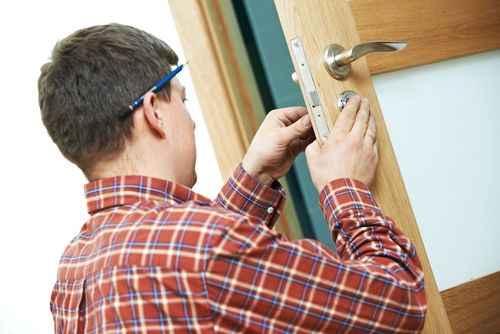Dubai’s architectural scene is a fusion of tradition and innovation, with every structure—whether a modern high-rise or a heritage-style villa—emphasizing form, function, and flair. One often-overlooked element that plays a pivotal role in both the aesthetics and security of these buildings is the door. From sleek, automated entrances in commercial buildings to solid wooden front doors in Emirati homes, door installation in Dubai is an essential service for homeowners, businesses, and developers alike.
Whether you’re renovating a property in Jumeirah, outfitting a new villa in Dubai Hills Estate, or upgrading a commercial space in Business Bay, understanding your options for door installation is key. This comprehensive guide explores everything from types of doors to materials, local standards, and regional considerations that affect the choice and installation of doors in the emirate.
Why Door Installation Matters in Dubai Properties
Doors in Dubai are more than entry points—they are statements of style, security, and smart living. The city’s dynamic blend of architecture, weather conditions, and lifestyle demands means door installations must meet high standards in both functionality and design.
Security in Urban and Suburban Areas
In communities like The Meadows, Mirdif, and Arabian Ranches, security is a top priority for residents. A professionally installed door—especially an armored or high-security model—can offer essential protection against intrusion while maintaining the villa’s aesthetic appeal.
In high-traffic commercial zones like Al Quoz and Deira, sturdy and fire-rated doors are essential for compliance with Dubai Municipality safety regulations, while also ensuring business continuity and tenant safety.
Climate and Environmental Factors
Dubai’s climate is characterized by extreme heat, dust, and high humidity levels—especially during the summer months. This makes material selection crucial during the door installation process. Doors must be resistant to warping, fading, and corrosion, especially in outdoor or partially shaded areas.
Common Types of Doors Installed in Dubai
Depending on the location, use case, and building style, different types of doors are used in Dubai’s residential and commercial environments:
1. Wooden Doors
A popular choice for villas in Nad Al Sheba and Emirati-style homes, wooden doors offer classic beauty and insulation. Teak, mahogany, and engineered hardwoods are commonly used for front doors, interior room dividers, and bedroom entrances.
2. Steel and Metal Doors
Common in warehouses, factories, and commercial buildings in Ras Al Khor and Al Quoz Industrial Area, these doors provide durability, fire resistance, and enhanced security. Powder-coated finishes help protect them from corrosion in Dubai’s harsh climate.
3. Glass Doors
Often seen in Dubai Marina, JBR, and City Walk, glass doors are ideal for modern apartments and storefronts. Tempered and laminated glass options enhance safety while maintaining a sleek, contemporary look.
4. PVC and Composite Doors
These doors are frequently used in residential towers in Al Barsha and Discovery Gardens due to their low maintenance and good thermal insulation properties. They are moisture-resistant, making them ideal for bathrooms and kitchens.
5. Automatic and Smart Doors
In high-tech developments like Dubai Silicon Oasis and Dubai Internet City, automatic sliding or smart access doors are increasingly used. Integrated with building automation systems, they offer hands-free entry and enhanced access control.
Key Considerations for Door Installation in Dubai
Installing a door in Dubai involves more than drilling hinges. There are regulatory, environmental, and aesthetic considerations to factor in.
Building Codes and Safety Compliance
In Dubai, door installation—especially for commercial and public-use buildings—must comply with Dubai Civil Defense regulations and Dubai Municipality building codes. Fire-rated doors, emergency exit signage, and panic bars are often mandatory in hotels, offices, and educational institutions.
Custom Sizes and Non-Standard Frames
Due to architectural diversity, especially in luxury communities like Palm Jumeirah and Jumeirah Golf Estates, many homes feature custom-sized door frames. This often necessitates tailor-made doors and professional installation to ensure a perfect fit.
Insulation and Energy Efficiency
In Dubai’s hot climate, thermally insulated doors help reduce energy consumption by keeping interiors cool. Double-sealed frames, weather stripping, and insulated cores are increasingly sought after in eco-conscious communities like The Sustainable City.
Door Installation Process: What to Expect
If you’re planning a door installation in Dubai—whether for a new build or renovation—here’s an overview of the typical steps:
- Site Inspection – The installer assesses dimensions, frame condition, wall alignment, and hinge orientation.
- Material & Style Selection – Based on room use, architecture, and client preference.
- Fabrication or Sourcing – Custom doors are crafted; others are sourced from local or international suppliers.
- Installation – Includes frame alignment, hinge fitting, handle and lock installation, and weather sealing.
- Finishing – Painting, polishing, or treating the surface as needed.
Proper installation is key to long-term durability. Misaligned frames or improper sealing can lead to warping, air leakage, and higher utility bills.
Interior vs. Exterior Door Installation in Dubai
The requirements for interior and exterior doors differ significantly in Dubai’s climate and construction norms.
Exterior Doors
Exterior doors in villas and standalone homes must endure direct sunlight, dust, and potential moisture exposure. Materials like hardwood, aluminum, and reinforced steel are commonly used, often with UV-resistant coatings and water seals.
Interior Doors
Interior doors can afford to be lighter in design and material. MDF, plywood, or PVC are often sufficient. In apartments in Al Nahda and International City, space-saving options like sliding or folding doors are also popular.
Cultural and Aesthetic Considerations
In many traditional Emirati homes, especially in Al Bastakiya or Hatta, doors are intricately carved and serve as expressions of heritage. Arabic calligraphy and geometric motifs are sometimes integrated into the design.
In contrast, expat-dominated areas like Dubai Marina or Downtown Dubai lean toward minimalist, modern designs with clean lines and neutral colors.
Color choice also plays a cultural role. White and beige are often preferred for interior harmony, while darker woods and bolder tones may be chosen for impact in luxury homes.
Sustainability and Eco-Friendly Door Choices
Dubai is making strides toward environmental responsibility, and door installation is no exception:
- Recycled wood and sustainably sourced timber are being used in villas across Al Barari and Green Community.
- Energy-efficient doors with insulation properties support Dubai’s Green Building Regulations and Specifications.
- Low-VOC finishes are preferred to improve indoor air quality, especially in schools and medical facilities.
Maintenance Tips After Installation
Dubai’s dusty environment and high temperatures mean doors need periodic upkeep to maintain their function and appearance:
- Clean door frames and hinges regularly to prevent dust buildup.
- Lubricate hinges and locks to prevent squeaking or sticking.
- Re-seal or re-paint exterior doors every 2–3 years for protection against the sun.
- Check alignment and seals to ensure energy efficiency, especially before summer.
Conclusion
From ensuring home security in Jumeirah Village Circle to enhancing aesthetics in Dubai Design District, door installation in Dubai is both an art and a technical necessity. With the city’s emphasis on modern living, smart solutions, and cultural elegance, choosing the right door—and installing it properly—adds tremendous value to any property.
By considering climate conditions, building codes, cultural preferences, and sustainability goals, homeowners and developers alike can make informed decisions that align with Dubai’s evolving architectural landscape. Whether you’re building from scratch or upgrading a legacy home, the right door opens more than just a room—it opens opportunities for better living.


